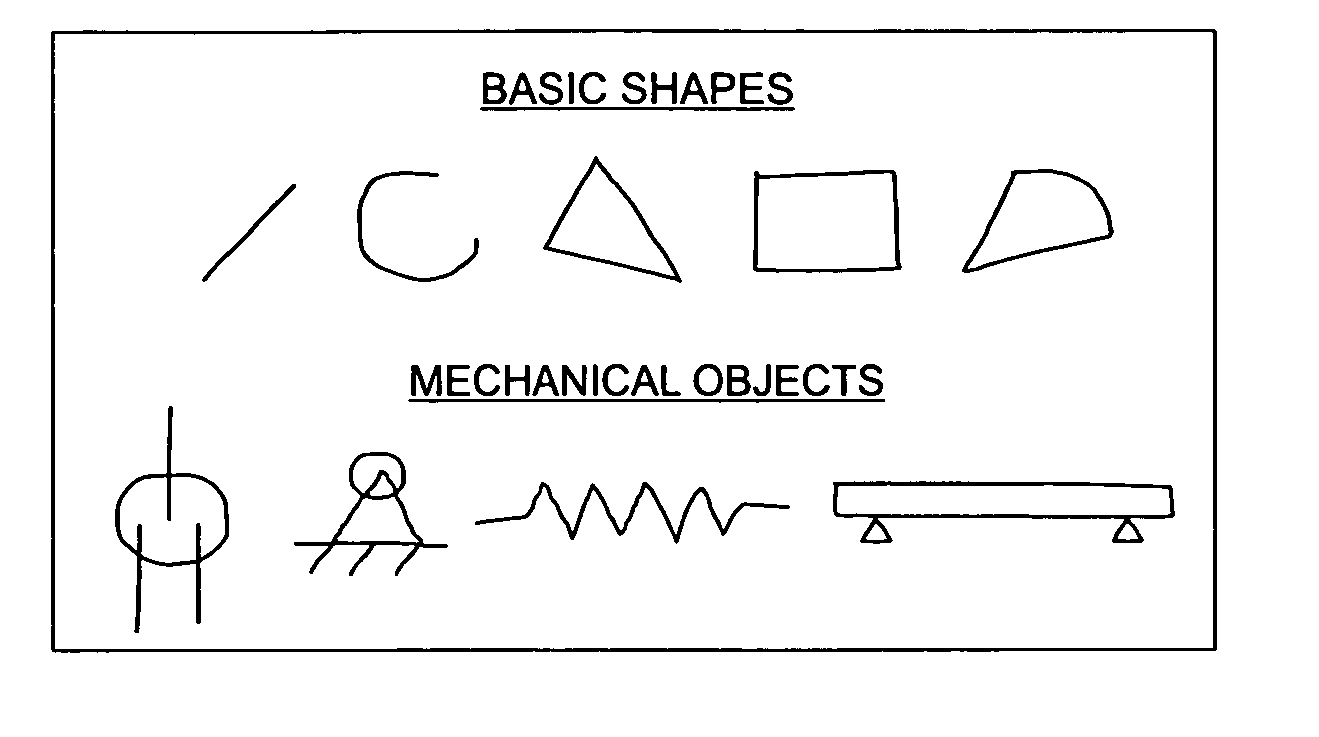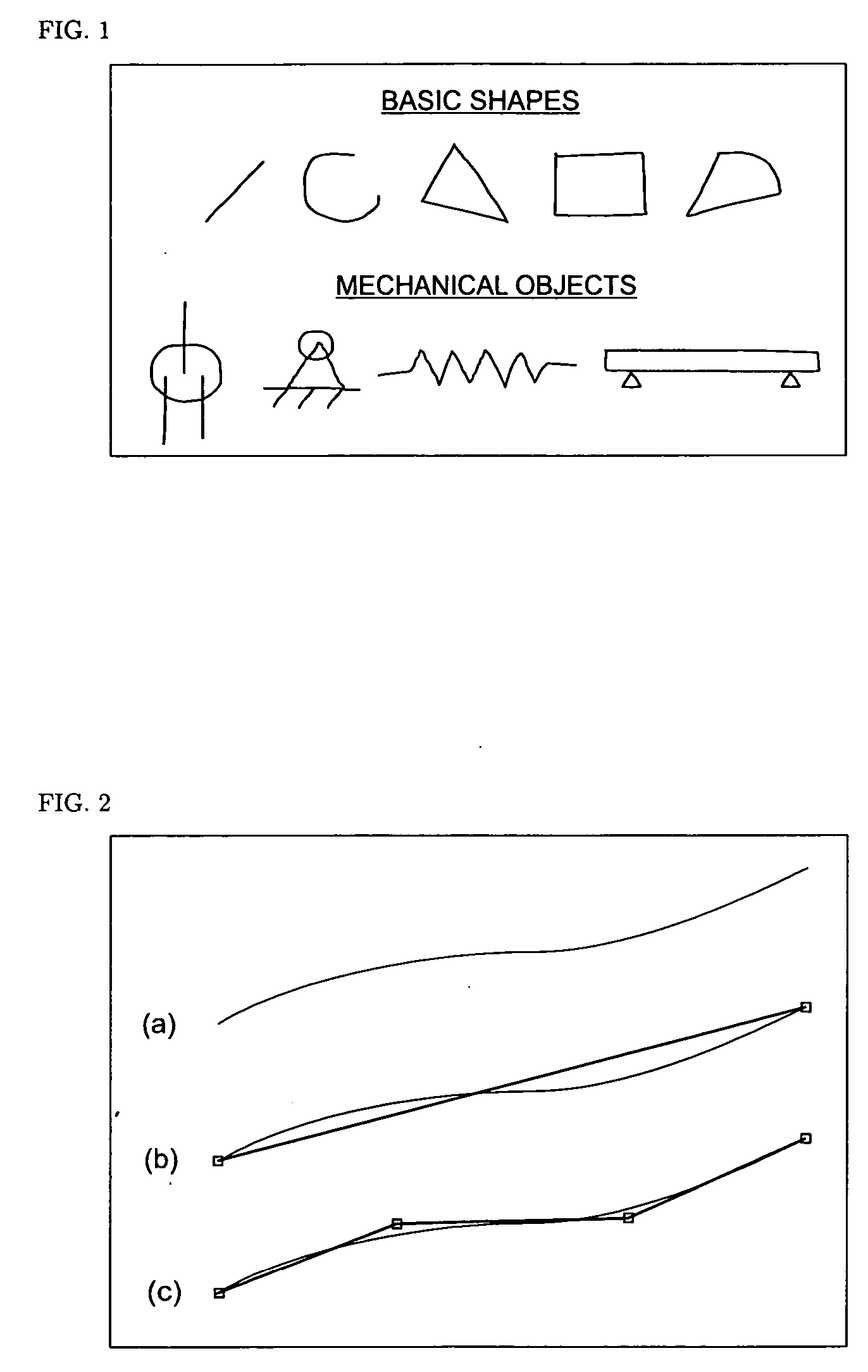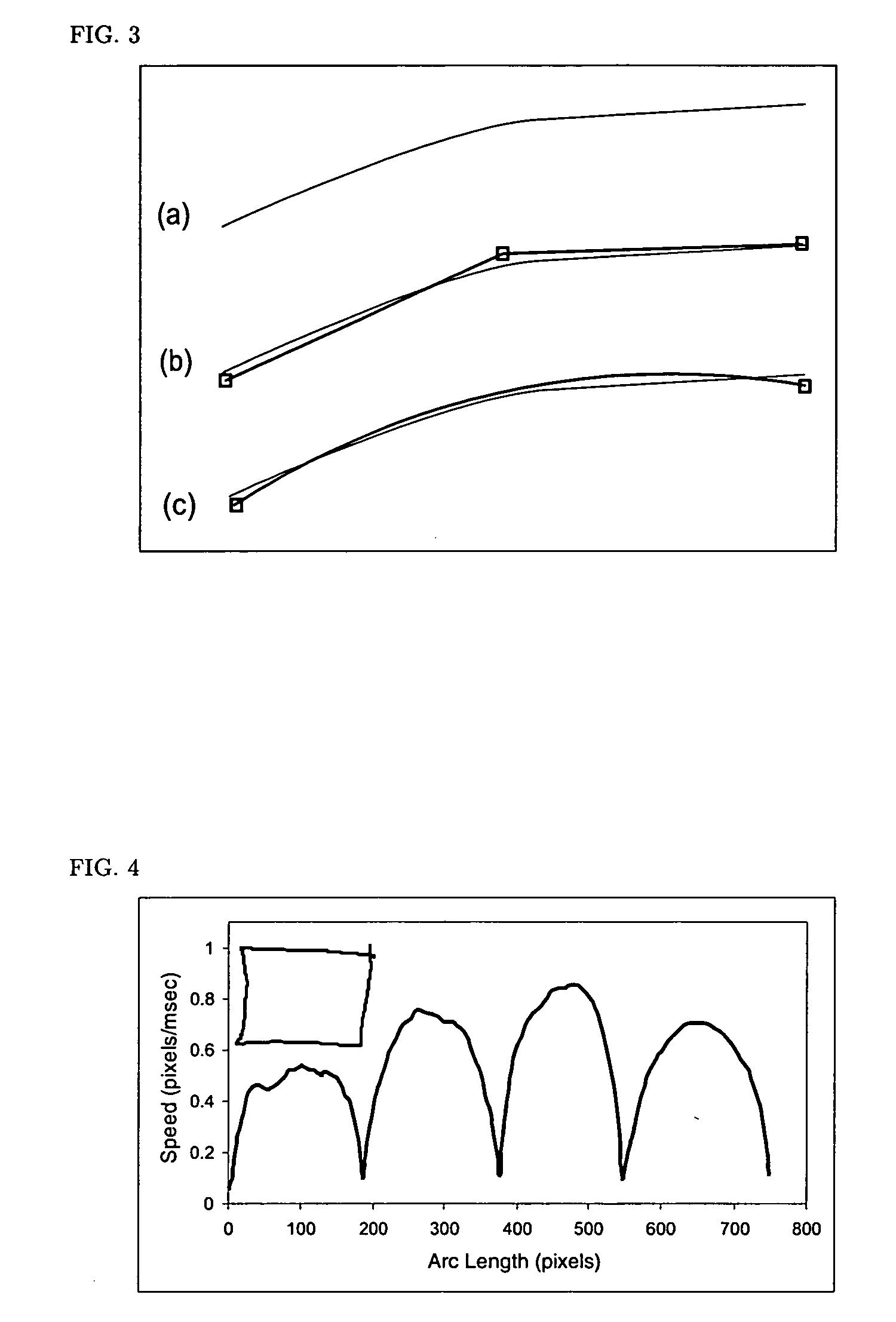Recognizing multi-stroke symbols
- Summary
- Abstract
- Description
- Claims
- Application Information
AI Technical Summary
Benefits of technology
Problems solved by technology
Method used
Image
Examples
Embodiment Construction
[0040] Pen Stroke Segmenting
[0041] The first step in interpreting a sketch is processing the individual pen strokes to determine what shapes they represent. Much of the previous work in this area assumes that each pen stroke represents a single shape, such as a single line segment or arc segment, which ever fits the stroke best. While this kind of approach facilitates shape recognition, it results in a less than natural user interface. For example, one would be forced to draw a square as four individual pen strokes, rather than a single pen stroke with three 90° bends.
[0042] Our invention facilitates a natural sketch interface by allowing pen strokes to represent any number of shape primitives connected together. This requires examining each stroke to identify the segment points, the points that divide the stroke into different primitives. The key challenge is determining which bumps and bends are intended and which are accidents. Consider, the pen stroke in FIG. 2(a), for example...
PUM
 Login to View More
Login to View More Abstract
Description
Claims
Application Information
 Login to View More
Login to View More - R&D
- Intellectual Property
- Life Sciences
- Materials
- Tech Scout
- Unparalleled Data Quality
- Higher Quality Content
- 60% Fewer Hallucinations
Browse by: Latest US Patents, China's latest patents, Technical Efficacy Thesaurus, Application Domain, Technology Topic, Popular Technical Reports.
© 2025 PatSnap. All rights reserved.Legal|Privacy policy|Modern Slavery Act Transparency Statement|Sitemap|About US| Contact US: help@patsnap.com



